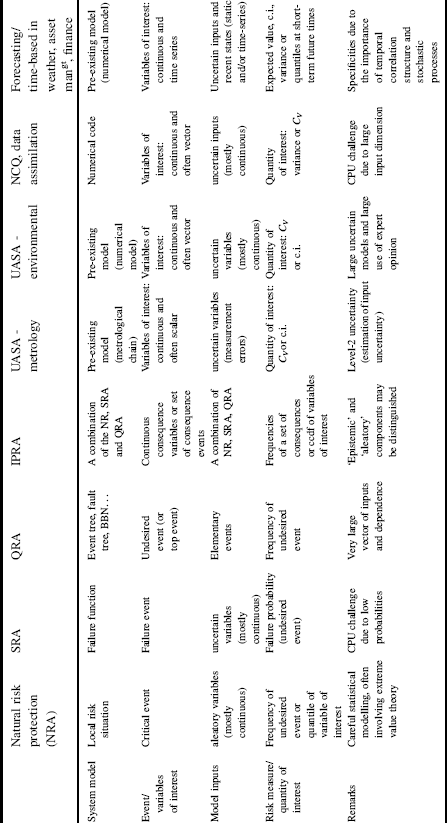1.6 Conclusion: The Scope for Generic Modelling Under Risk and Uncertainty
1.6.1 Similar and Dissimilar Features in Modelling, Risk and Uncertainty Studies
Practice shows both similar and dissimilar features, as summarised in Table 1.3. Firstly, the general structure is similar in most modelling studies (Figures 1.1–1.3 and 1.7): it incorporates a system model, representing the system studied under risk and/or uncertainty, and a number of associated inputs and outputs of interest for decision-making. Furthermore, most risk or uncertainty studies incorporate a probabilistic representation of at least some of the inputs. Hence the outputs of interest are assessed from the perspective of a probabilistic quantity which is called the risk measure or quantity of interest (or design criterion, etc.). From a theoretical perspective, such measures mostly involve a generic format, namely multiple integrations of the system model over the uncertainty model.
Table 1.3 Overview of domain generics and specificities.

Yet, a closer look into the various practices evidences some dissimilarity:
- The nature of system models: clearly phenomenological for natural risk or SRA; mostly logical for QRA; of a mixed nature within IPRA; and viewed as numerical in UASA or code qualification.
- The type of inputs/outputs: discrete events are considered for some (in QRA or SRA for the output side) while continuous ...
Get Modelling Under Risk and Uncertainty: An Introduction to Statistical, Phenomenological and Computational Methods now with the O’Reilly learning platform.
O’Reilly members experience books, live events, courses curated by job role, and more from O’Reilly and nearly 200 top publishers.

